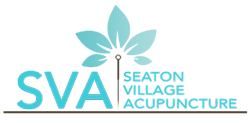In our previous post, we explored the symptoms and causes of forward head posture—also called “tech neck.” This shoulder-slouching, neck-craning posture is one result of our modern lives spent on cell phones, playing video games, carrying heavy backpacks and driving without being aware of our neck and spinal position. Over time, forward head position can cause chronic neck and shoulder pain, spinal compression, misalignment, and numbness or tingling in our arms and hands.
If you find yourself suffering from the physical consequences of forward head posture, here are 7 ways you can help alleviate it:
- Chiropractic care. Who better to address a spinal misalignment problem than a doctor specializing in the healthy position of your spine? Your chiropractor will adjust your spine into proper alignment, which will relieve pain and encourage better posture by addressing structural issues associated with tech neck over time. He can also advise you on smart posture practices, stretches, exercises and work habits to improve not just your spinal health, but also your overall quality of life.
- Stretching and posture-correcting exercises. Movement and stretches that support proper posture and shoulder position can help to reduce your painful symptoms. These can include arm circles, rows, chest openers, chin tucks, ear-to-shoulder stretch, squeezing shoulders together and yoga positions. Try the “doorway stretch,” where you place your hands and forearms on the frame of a doorway and push your chest forward while leaning forward with a neutral neck position.
- Use smart devices smartly. Be aware of how you’re using your phone, tablet and other devices. If you’re shifting your head and neck forward at an angle that places stress on your neck and spine, switch positions. Instead of craning your neck forward, hold your phone or device up at eye level rather than looking down at it. Be sure your computer screen is at eye level at your workstation. When you can, move your eyes instead of moving your head and neck. The goal is to keep your head completely upright, not leaning forward.
- Strengthen your core. Regular exercise can strengthen the muscles that support your spine and neck to protect them from text neck symptoms. Focus on exercises that target your core abdominal area and shoulders. These can include crunches, back extensions, plank pose, leg extensions and crossovers. Regular exercise will increase blood flow to promote proper healing through good circulation.
- Physical therapy. If your back and neck issues from prolonged forward head posture have altered your musculature, you may need professional help. A physical therapist can guide you in correcting the imbalances forward head posture causes. They will also provide specific therapeutic exercises to incorporate into your daily routine to fix current issues and prevent future problems.
- Wear a posture corrector. For severe posture problems, wearing a posture corrector can help by positioning the body correctly, so you maintain proper alignment while performing work and other daily activities. These devices come in various materials, sizes and strengths to help train your shoulders, neck and back into the correct position. They support your core muscles and relieve pressure on sensitive structures.
- Focus on ergonomics. Ergonomics means shaping a job to fit the person, rather than the other way around. It focuses on proper body positioning and efficiency in accomplishing daily tasks. If you work at a computer workstation, be sure your monitor is at eye level, everything on your desk is within arms’ reach, and your arms rest on the keyboard slightly below the elbow—allowing your wrists to remain straight as you type. If sitting for too long causes pain and stiffness, consider a standing workstation. When you begin any task—whether it’s yard work, playing with pets or kids, or washing dishes—try to bring the action in closer to your body rather than overextending your arms and leaning your head forward.
Forward posture problems can be painful and, if not addressed, can lead to chronic conditions that are difficult to correct. Pay attention to your posture throughout the day. Stop slouching forward if you notice these behaviors in yourself. Focus on sitting up straight.
With a commitment to repositioning your body and performing mediating exercises, stretches and lifestyle adaptations, you can rehabilitate your muscles and fix your posture problems.

